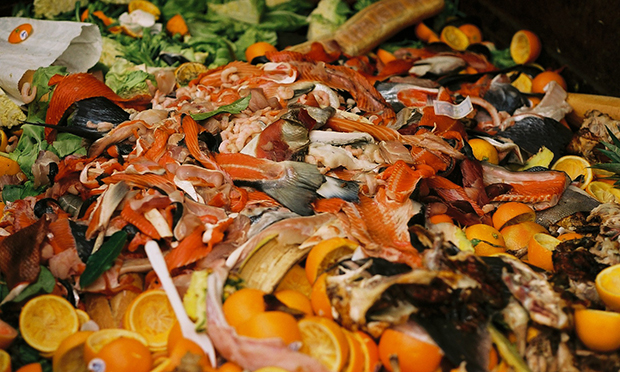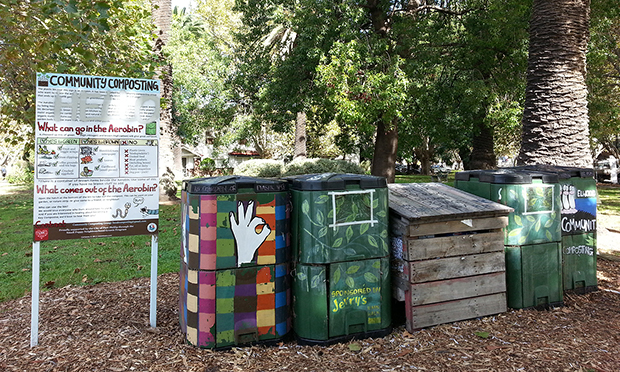The Citizen Gardener: ‘There is no waste in nature’

Waste not, want not
I blame the flush toilet for many of our ecological problems.
When we wash our waste away into an invisible system, it’s not ours any more to worry or even think about. Out of sight, out of mind.
I’m not suggesting we get rid of our sewage system. It’s a wonderful thing that stops us getting all sorts of diseases. But I do think we should at least take an interest in waste and what happens to it because the way we deal with our personal waste – as well as industrial, agricultural, food, health and building waste – underlies every ecological problem we face.
Climate change itself is caused by waste – the gases that are making the planet warm up are waste products of burning fossil fuels.
I’d been thinking about the flush toilet for some time (not all the time) when I read an article in the National Geographic which made the problem with waste clear.
There is no waste in nature.
Natural ecosystems operate in cycles — plants grow in soil, animals eat plants, dung replenishes soil – but the industrial economy is largely linear.
Raw materials are extracted – minerals, ores, fossil fuels, and biomass (loosely, animal or plant material) – and become products which meet human needs (housing, health, food, communication, transport, services, consumables).
In 2015, the total flow of these raw materials into the global economy, according to the article, was 102.3 billion tons. Nine percent of what is extracted from the earth to meet our needs (or perhaps wants) is recycled or composted. The rest is pollution.
There are ingenious enterprises to recycle or capture this waste.
Just recently I learned about a system that cuts grass verges and turns the cuttings into fuel. But it’s a drop in the ocean.
Our government needs to get a grip on this, but until it does, it’s up to us on a local and personal basis to do what we can.
The council is urging us to recycle more but it’s much better not to create any surplus in the first place.
We need to reduce our consumption in the home and garden. But if we do succumb and get new stuff, we need to stop it becoming waste by keeping it going in different ways – repairing, reusing, turning it into something else or mimicking nature and introducing the circular system.
According to the Love Food Hate Waste campaign, we throw away 20 per cent of our groceries, and overall domestic food waste accounts for 70 per cent of the total thrown away.
We are gradually reducing the amount we put in the rubbish, but if we didn’t throw away so much food, we wouldn’t need to produce so much, and land that is producing crops could be given to nature to try to replenish species and soil depletion.
In the meantime, we need to stop rubbish getting into the system.

Here are some ideas for what we can do in the garden:
1. Compost. Many composting systems use food waste. Wormeries, bokashi bins and hot bins all take every kind of organic (something that has lived) waste. They shouldn’t smell or become sludgy if you have the right balance of green to brown. That is, fresh leafy stuff and food versus papery stuff (cardboard, scrunched or shredded paper, twigs). It should be at least 50 per cent brown. Use ‘worm tea’ to feed your plants. Use the compost you make on your pots’ beds or give it away. If you don’t want to or can’t make your own compost, support community composting schemes. Hackney Parks are looking for suggestions for what we do with our green spaces. We could have public composting in parks.
2. Reuse plastic pots. Fifty million plastic pots are produced annually in the UK, according to the BBC. Most of them (the black ones) can’t be recycled but they are good at what they do and will last beyond your life so keep them going. Even better, ask your garden centre to reuse them – some, albeit very few, will do this. One garden centre, Edible Culture in Kent has gone plastic-free and will sell its plants in paper sleeves which can be put in the ground.
3. Share, hire or borrow garden equipment rather than buy. Use local noticeboards like Nextdoor, Olio or libraryofthings.co.uk. Repair your tools. Wandsworth prison is part of a scheme to repair garden tools.
4. Collect rain water. If you stop water going into the sewage system, you may be able to get a rebate from Thames Water. See Wendy Allen’s website for ideas for rain gardens.
5. Choose the right plant for your conditions. If you’re trying to grow a sun-loving plant like lavender or sage in a wet shady corner, it won’t thrive and it will become waste.
6. Turn plastic bottles into irrigators. Make small holes in bottles, bury them next to your plants and fill them with water. This ensures water gets to the roots of your plants.
7. Reuse plant labels. Use wire wool or a metal scourer to rub off ink.
8. Donate food. If you are growing enough to have a glut, donate your extra veg to a community project like Food Cycle.
9. Remember not to use peat composts. Peat bogs store carbon. If we use it in our gardens, that carbon is released into the atmosphere as greenhouse gas.
10. Grow your own loofahs. Chilton Seeds sell the seeds but they need quite a high temperature to germinate so start them indoors. This article gives some more ideas.
If you want some ideas for what to do for nature in your street, garden or balcony, go along to Nature Makeover/Nature Takeover at Hackney City Farm on 29 March from 2-4pm.
Fourteen inspiring speakers, including from Rewild My Street, the City Farm, Hackney Herbal, and Roots and All, will give tips on putting nature first. Turn up early as space is limited.
Kate Poland is an award-winning community gardener and the UK’s first ever postcode gardener in E5. For more, head to cordwainersgrow.org.uk and friendsoftheearth.uk
